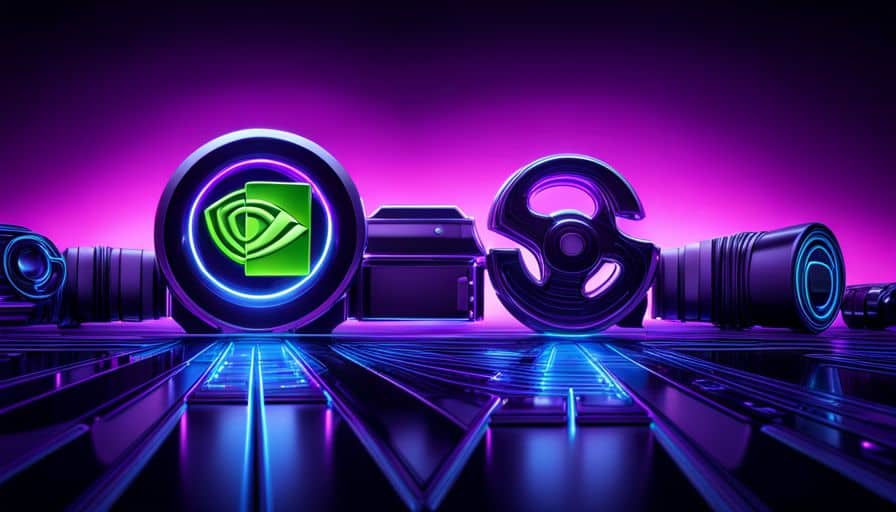In a remarkable stride towards digitizing our world, Nvidia has introduced an impressive breakthrough in the form of their 2D-video-to-3D technology. This cutting-edge advancement combines the power of AI and photogrammetry to deliver astounding 3D reconstructions of scenes and objects from 2D video input.

Nvidia’s approach employs a process similar to how artists perceive objects from various angles to grasp their depth, size, and shape. By analysing multiple frames captured from different perspectives, the model selects the most suitable frames to create a rough 3D representation of the scene, akin to a sculptor starting to carve the shape of an object.
With the position of the camera determined in each frame, Nvidia’s Neuralangelo AI algorithm then optimizes the rendering, meticulously refining the details comparable to a sculptor painstakingly chiseling stone to mimic the texture of cloth or the human figure. The outcome is an exceptional 3D object or a large-scale scene, ready to be utilized in virtual reality applications, digital twins, or even robotics development.
Witnessing the potential of this groundbreaking technology is awe-inspiring. Imagine waving your iPhone through the air, capturing the 2D video of an object, and instantly obtaining its 3D geometry. Or piloting a drone to map out a location and effortlessly extracting a detailed 3D representation of a dog, for instance. The possibilities offered by Nvidia’s 2D-to-3D video technology herald a new era of digitization, bringing us closer than ever to a fully immersive virtual world.
Looking ahead, one can’t help but envision a future where Apple’s glasses, equipped with lidar technology, scan our surroundings, and Nvidia’s software seamlessly reconstructs our reality in stunning 3D. The convergence of these technologies opens the gateway to a metaverse experience where our entire environment is replicated and presented right before our eyes.
While celebrating this extraordinary achievement, it’s worth noting that Nvidia acknowledges the room for improvement in mesh quality and topology. The company has already set its sights on enhancing these aspects, with promises to increase the quality several times over. The potential applications span from virtual reality experiences to digital twins and robotics development.
As Nvidia’s 2D-video-to-3D technology showcases the possibilities that emerge from the marriage of AI and photogrammetry, it underscores the rapid advancement in digital transformation. With each stride, we inch closer to a world where our reality can seamlessly blend with the virtual realm, opening up infinite opportunities for innovation and exploration.
The journey to perfecting the digitization of our world continues, and Nvidia’s remarkable breakthrough is undeniably a significant step forward. The question remains: How will this technology shape our future, and what new realms of possibility will it unlock?
Read more about AI:
Read More: mpost.io









 Bitcoin
Bitcoin  Ethereum
Ethereum  Tether
Tether  XRP
XRP  Solana
Solana  USDC
USDC  Dogecoin
Dogecoin  TRON
TRON  Cardano
Cardano  Lido Staked Ether
Lido Staked Ether  Wrapped Bitcoin
Wrapped Bitcoin  Hyperliquid
Hyperliquid  Sui
Sui  Wrapped stETH
Wrapped stETH  Chainlink
Chainlink  Avalanche
Avalanche  Stellar
Stellar  Bitcoin Cash
Bitcoin Cash  Toncoin
Toncoin  LEO Token
LEO Token  Shiba Inu
Shiba Inu  Hedera
Hedera  WETH
WETH  Litecoin
Litecoin  USDS
USDS  Wrapped eETH
Wrapped eETH  Monero
Monero  Polkadot
Polkadot  Binance Bridged USDT (BNB Smart Chain)
Binance Bridged USDT (BNB Smart Chain)  Ethena USDe
Ethena USDe  Bitget Token
Bitget Token  Pepe
Pepe  Pi Network
Pi Network  Coinbase Wrapped BTC
Coinbase Wrapped BTC  WhiteBIT Coin
WhiteBIT Coin  Aave
Aave  Uniswap
Uniswap  Bittensor
Bittensor  Dai
Dai  Ethena Staked USDe
Ethena Staked USDe  Aptos
Aptos  NEAR Protocol
NEAR Protocol  Cronos
Cronos  Jito Staked SOL
Jito Staked SOL  OKB
OKB  BlackRock USD Institutional Digital Liquidity Fund
BlackRock USD Institutional Digital Liquidity Fund  Internet Computer
Internet Computer  Ondo
Ondo  Ethereum Classic
Ethereum Classic